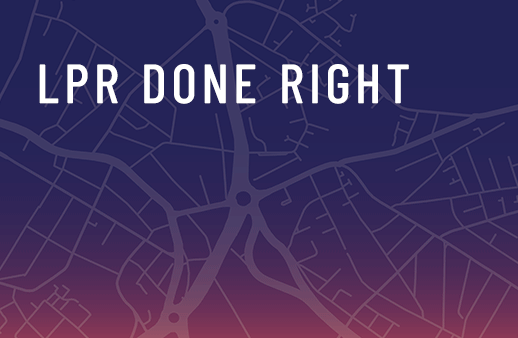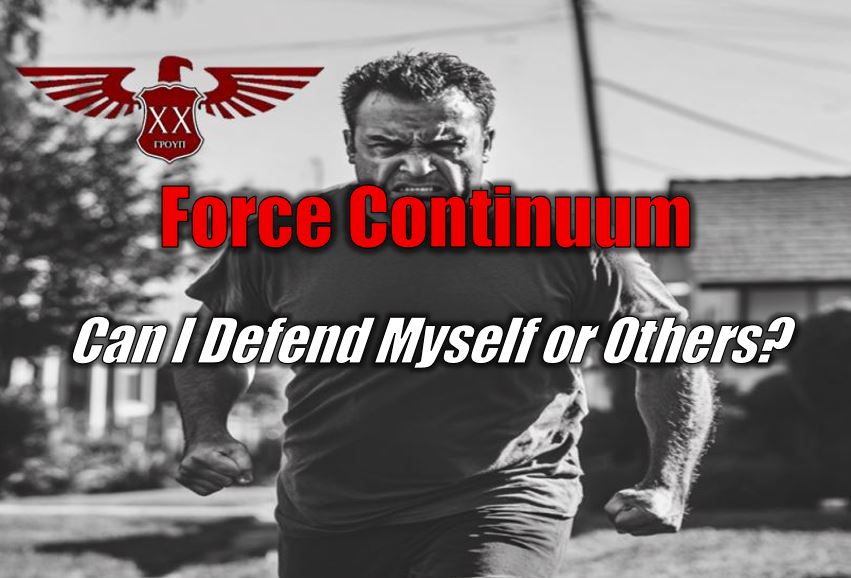“Force Continuum”
EDITORIAL
In the asset recovery industry, we are faced with the possibility of violence on every assignment we work. Whether you are a field agent, camera car driver, office support, owner, manager or lot person, the risk of violence is always present.
As an expert witness for repossession litigation, I see firsthand how a situation can easily escalate to the point of violence resulting in injuries and in some cases even death.
I am often asked by members of the Eagle Group XX/USA, “what can I do to protect myself or others and most importantly stay out of a costly and time-consuming litigation, criminal or civil?”.
I am not an attorney, and I would never be so presumptuous as to offer legal advice, but I do feel it is very important that all members of the asset recovery know and understand how far they may go to defend themselves and others in the face of violence based on the concept of “force continuum”.
Understanding the concept of the “force continuum” can empower members of the asset recovery industry to make informed and lawful decisions during self-defense situations. The force continuum, widely taught in law enforcement and security settings, is also applicable to private citizens who wish to protect themselves or others while adhering to the law.
Again, I would state that I am not an attorney and am not giving legal advice but rather expressing my perspective on self-defense and force continuum when faced with a potentially violent situation. I will attempt to explore the force continuum, its relevance to civilians in the asset recovery industry, and how to apply it responsibly.
We should start by clearly understanding what force continuum is.
The force continuum refers to a graduated scale of force options that individuals may use in response to a perceived threat. It emphasizes proportionality, meaning that the level of force used should correspond to the threat posed.
Escalating or using excessive force beyond what is necessary to neutralize a threat can create unwanted legal consequences, even for asset recovery personnel acting in self-defense. For civilians, members of the asset recovery industry in particular, Force Continuum is a set of guidelines that can help decide how much force can used to defend ones self or others in a dangerous situation. It can help defenders avoid using excessive or unnecessary force, as well as reduce the risk of legal consequences after a self-defense incident.
The next important factor is knowing the levels of the force continuum.
While there may be various definitions and the categories may vary, the following are the general levels of the continuum of the force as I have been taught:
- Presence: The mere presence of an individual can deter aggression. For instance, adopting a confident posture and maintaining eye contact may discourage a potential assailant from escalating a situation.
- Verbal Commands: Using clear and assertive language to de-escalate a situation is a key step. Statements like “Stay back” or “Leave me alone” can communicate boundaries without physical intervention.
- Non-Lethal Physical Force: If verbal commands fail, non-lethal methods such as blocking, pushing, or using defensive tools like pepper spray can help create an opportunity to escape.
- Intermediate Force: This level includes using more impactful but non-lethal measures, such as striking an assailant in areas that will not cause permanent harm but are effective in neutralizing the immediate threat.
- Deadly Force: The use of lethal force, such as a firearm, is considered the last resort and is legally justified only when there is an imminent threat of death or serious bodily harm.
To have a more in-depth understanding of the various levels of force continuum I would state the following:
Level 1: Presence & Verbalization
This level involves using your situational awareness, verbal communication and personal alarms or yelling to deter or avoid a potential threat. For example, you can cross the street if you see a suspicious person approaching. You could also shout verbal de-escalation commands such as, “Stop!” or “Help!” if someone tries to grab you. A personal alarm device or whistle can attract attention and scare off an attacker too.
Level 2: Empty Hand Control — Bodily Force
This level involves using your physical skills and techniques to escape or fight back against an attacker. For example, you can use kicks, punches, throws or blocks to create distance and get away from an assailant. You can also use pressure points, joint locks or chokes to disable or control an attacker. You should only use this level of force if you are trained and confident in your abilities, and if you have no other option.
Level 3: Less-Lethal Weapons
This level involves using weapons that are designed to incapacitate or stun an attacker without causing permanent damage or death. For example, you can use pepper spray, stun guns, Tasers or batons to stop an attacker from harming you or others. The risk of casualty is lower with “less-lethal” weapons though not impossible. Outside factors, such as falling down a flight of stairs, after the application of less-lethal force may still result in a fatality. You should only use this level of force if you are legally allowed to carry and use these weapons, and if you are familiar with their effects and limitations.
Level 4: Lethal Force
This level involves using weapons that are intended to cause serious injury or death to an attacker. For example, you can use firearms, knives or other sharp objects to defend yourself or others from an imminent threat of death or grievous bodily harm. Laws vary by state. Stay up to date on local and federal regulations. In general, though, you need to face a deadly threat before you use deadly force.
You should only use this level of force as a last resort and if you reasonably believe there is no other way to prevent the attack. You should also be aware of the legal and moral implications of using lethal force.
It is important to understand that the use of force continuum is not a rigid or fixed sequence of steps. You can skip or repeat levels depending on the situation and your judgment. You can also de-escalate or stop using force if the threat is reduced or eliminated.
Another very important issue is your “Post-Incident Actions”. You should report the incident to the authorities, seek medical attention if needed and cooperate with the investigation. You should also be prepared for the legal and emotional consequences of using force. After a self-defense incident, your first call should be to 911, and your second call should be to your employer.
I can assure you that in most instances there will be legal implications.
Generally, in a self-defense case, I have found that you will have to meet four rules for the use of deadly force:
- Reasonable fear: You must genuinely believe that your life or someone else’s life is in immediate danger. The fear should be something that a reasonable person in the same situation would also feel.
- Innocent party: You must be the innocent party and cannot be seen as an aggressor. You should not start or escalate a conflict.
- Proportional response: No less force should be sufficient to stop the threat. If you can stop a threat with something less than deadly force, you should.
- No escape: Many states’ laws require that if you can do so safely, you are expected to seek escape from a potential attack (if an avenue of escape is available and practical), before standing your ground and defending yourself with deadly force.
Using any type of lethal force when it’s not legally justified can lead to serious legal consequences, including criminal charges such as assault with a deadly weapon or brandishing a firearm. Even if you don’t fire your weapon, simply showing it can be considered a use of force in some jurisdictions.
Having a documented role playing scenario at your recovery agency can help prepare you for a self-defense incident before, during and after!
You should be aware that civil liability lawsuits can also arise from these self-defense situations. The parties involved could file lawsuits for emotional distress, personal injury, or civil rights violations. Even if you win the criminal trial, you can still lose in a civil liability case. Utilizing the use of force continuum can help your people make rational and ethical decisions in stressful and dangerous situations.
– Can I Defend Myself or Others?
Ron Brown
MCE, IFCCE, CCCO, CARS, MPRS, API
Facilitator for Eagle Group XX/USA
















Facebook Comments